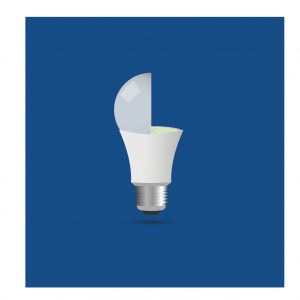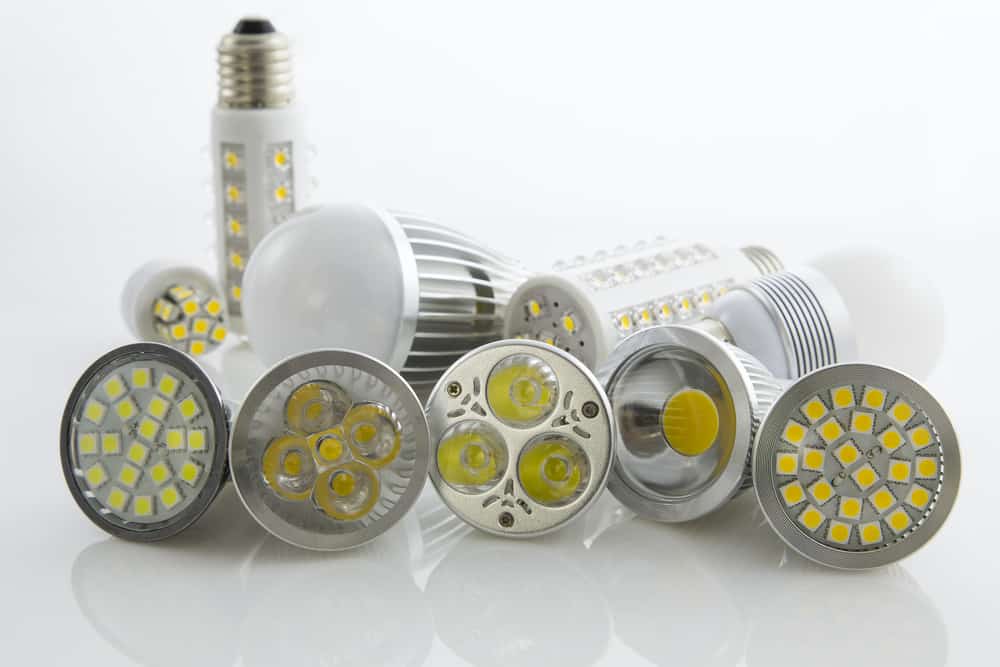Now with overlapping lighting technology in the market, it’s vital you get the most out of your purchase by using products in the right places and with the right compatible equipment.
For example, what do you get if you buy a dimmer switch, connect it to a touch-sensitive dimming lamp, and insert a smart dimmable bulb into it?
A crazy experiment for one, but a waste of money as well!
So read this guide to find out how to prevent at least some of these mistakes.
Smart bulbs do work with touch lamps, but are an unnecessary spend, since the lamp already controls brightness. To use a smart bulb, turn the touch lamp to maximum brightness and then control it with the smart bulb app.
How Do Touch Sensitive Lamps Work?
A regular lamp works by clicking a switch that makes or breaks the electrical connection in the circuit.
When the connection joins, the circuit is completed, and the lamp turns on. When the link separates, the circuit breaks, and the light turns off.
Regular lamps also usually have one brightness setting: full-power. You cannot dim the light with an on/off switch.
Now let’s have a look at how touch-sensitive lamps work. These are lamps that turn on, off, and change between brightness levels by the hand’s touch on the metallic part of the lamp’s body.
Touch lamps work based on a principle called capacitance. An object can hold electrical charges.
The human body also holds an electrical charge.
The human hand and the touch lamp by themselves, and both in contact with each other, all have different capacitance.
It is only the last instance that results in the bulb getting current and the lamp turning on.
When you touch the metallic body, the circuit detects the change in capacitance. Then, electrical charges move between the hand and lamp, and the internal switch flips on by detecting this.
To reiterate, in the case of a touch lamp, its body acts as a circuit because the lamp’s circuitry is wired to the external layer of the lamp’s body. Your hand, when it touches the lamp, completes the circuit.
Furthermore, the touch lamp also can control the brightness of the bulb. It can do this by altering the ‘duty cycle’ of the bulb, referring to how quickly it turns on and off per second.
Since the circuit is complete, the only way to dim a bulb in the touch-sensitive lamp is to reduce the duty cycle. That is, the bulb turns on and off in rapid succession but at a slower rate, making it appear dim.
So in this way, the switch of a touch sensitive lamp lies inside its body, turning on and off by the touch of our hand.
Related: Do LED Bulbs Work With Wax Warmers?
How To Smart Bulbs Work?
Now smart bulbs are mini circuits in themselves. They are not tied to the body of a lamp or to dimmers of fixtures, for example.
The brightness too of a smart bulb is being controlled from within the bulb and is not connected to the lamp or fixture’s circuitry. Neither is it controlled by the duty cycle of the bulb.
A smart bulb does not need any intelligent switches or electrical work to configure them in your room. You screw them into your regular ceiling or lamp sockets, and they are ready to go.
The only difference is that you would now have an app on your phone that allows you to control your smart bulb. It’s also widespread to hook up your app with any smart home assistant device like an Alexa or Google Home.
So through remote input, you can turn your lights anywhere in the house on, off, change the brightness, and if they’re colored bulbs, set a color for your current mood!
They work over the WiFi network that is shared between the app and the bulb. Even if you don’t have access to the lamp or fixture’s physical switch, you can operate the bulb.
In fact, the whole point of a smart bulb is to free yourself from getting up and turning the switch on or off. You won’t ever need to use the wall switch and need to keep it turned to ‘on’ at all times to keep the circuit connected.
Moving on to how the dimming feature works in a smart bulb, we will see how it differs from touch-sensitive circuitry.
The smart bulb requires full power to operate, unlike a regular bulb in the touch lamp. The touch lamp alters the duty cycle to 30% or 60 percent of the bulb’s power to appear dim.
The smart bulb, on the other hand, adjusts the brightness of the bulb by utilizing pulse width modulation (PWM).
Pulse Width Modulation (PWM) is part of the programming of the smart LED. The PWM functionality is pulled from the logic board or computer connected to the LED circuit.
You need the circuit to be complete and full power supplied to the LED’s circuit to control it through your app.
Also read: Can You Use LED Bulbs In Lava Lamps?
Should You Use Standard Or Smart Bulb In Touch Lamps?
So all this technical talk, while you’re just wondering whether you need a smart bulb or a standard LED bulb in your bedside table touch lamp.
Well, now that you know the working of the circuit and the brightness control, you’d be able to see how a smart bulb’s true potential is not fully used in your bedside touch lamp.
Firstly, it is right next to you within arm’s reach anyway, so you can quickly turn it on and off physically.
Secondly, a smart bulb is programmable to be set to timers, colors, and brightness. And a side table lamp is usually only used for a little while before bedtime or soon after waking up. It’s just not used as much.
Using a smart bulb to control it throughout the day will get you your money’s worth.
Most importantly, a touch lamp already has the functionality of dimming by touching it with your hand. You don’t need to spend money on the same feature by buying a smart bulb too.
You can use that money to get smart bulbs to make your ceiling lights dimmable in the living room!
Also read: Can You Use Smart Bulbs In Ceiling Fan?
How To Make Smart Bulbs Work With a Touch Lamp?
Considering you are determined to plug in a smart bulb into your side table because you want the added functionality, here’s how you go about it.
Ensure you touch the lamp a couple of times and get it to maximum brightness, i.e., full power.
Once you have done that, you are now free to control the smart bulb in your touch lamp only through the app on your phone or the digital assistant.
If you happen to touch the lamp again, it will turn off, since touching it is like turning off the switch, as you now know.
Final Words
It’s always a good idea to dig a little deeper behind the working of your gadgets and electronics around the home and office.
You never know what new tip you will discover that might help you save money, time, and effort.
So keep those smart bulbs for frequently used lights, and you will use the full worth of a smart bulb.
Have you ever used smart bulbs in touch lamps?
Let me know in the comments where you plan to use your smart bulbs.




